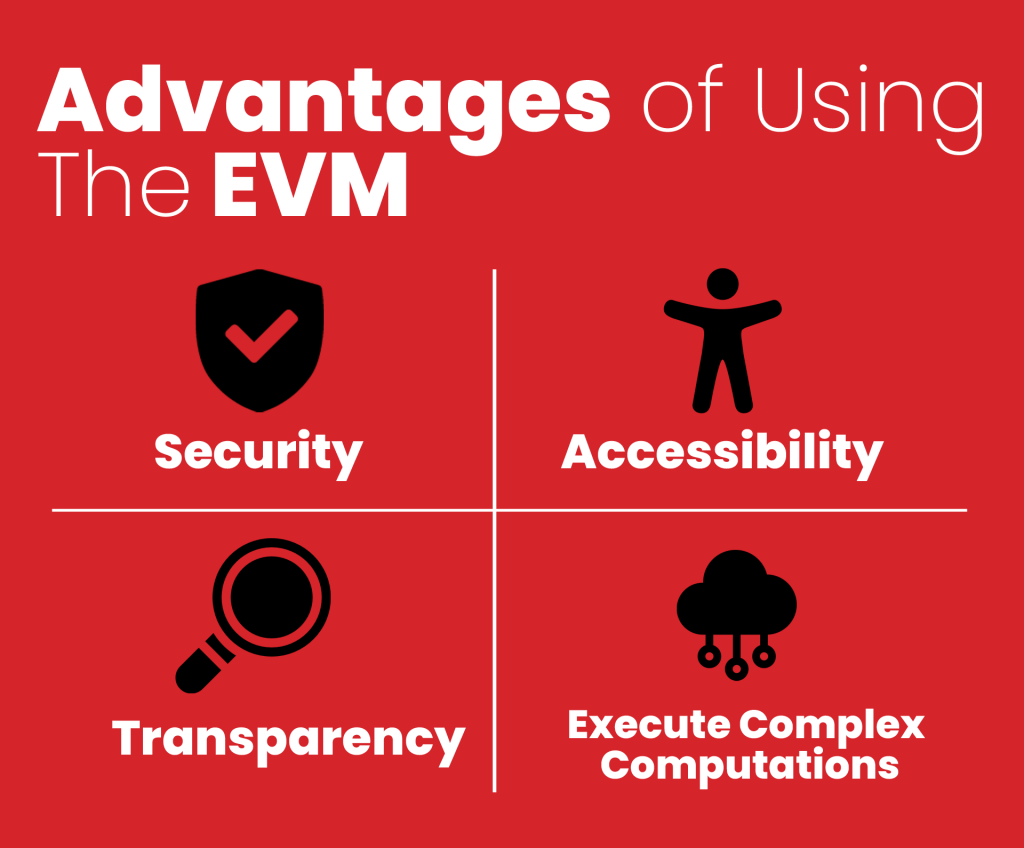
The Ethereum Virtual Machine (EVM) has set the ball rolling for smoother smart contracts within the entire ecosystem. What is the difference between Ethereum and smart contract? The former is a blockchain platform that is decentralised and sets up a peer-to-peer network which verifies and implements smart contracts safely.
Smart contracts, on the other hand, are mechanisms for enabling participants to securely transact without the need for any trusted central authority. Here’s learning a little more about smart contracts before diving into EVM.
It is a self-implementing program automating the actions needed for a contract or agreement. Upon completion, the transactions can be tracked and are not reversible.
They enable agreements and transactions to take place among anonymous participants without the need for any central governing authority or enforcement procedures.

The Ethereum Virtual Machine (EVM) is a runtime ecosystem for smart contracts in Ethereum. It is isolated and sandboxed from the other system components. Your programs and data will remain safe and unaffected by other EVM operations, irrespective of the number of times you call any specific function on the same.
Ethereum has its own scripting language (Turing-complete) which is known as Solidity and this makes it necessary to implement the code. The EVM takes care of this necessary task.
The EVM has been created with an objective of becoming a world computer and has massive power, executing scripts for generating outcomes which are arbitrary. It stores blockchain data while executing code in the smart contracts on the network.
The machine can easily run any type of crypto-based contract which is built on Ethereum. The EVM enables a platform for decentralised programs/applications to be built over it, making sure that all smart contracts and transactions are done in the right way as necessary for the smart contract code. It also functions as an application execution platform.

The Ethereum Virtual Machine has its own set of benefits. It helps implement un-trusted code without any risks to data in the process. The computations will never interfere with any other events across the system.
Complex smart contracts may be run easily on the system without being anxious about their interactions. The contracts written here will get access to all the states of Ethereum anytime they wish, enabling processing in a deterministic manner and ensuring higher guarantees about their accuracy.
The distributed consensus model is followed where the same program is run by each participant from his/her own machine. The network has to reach consensus at any point in time, gaining more robustness against individual node failures.
Multiple node updates can take place together without any worries on disagreements on the code writing. The EVM is also tailored to write smart contracts along with helping develop decentralised applications that are programs running across distributed networks in a manner where each one witnesses the same version. This makes it easier to write stateful contracts which require access to any type of persistent storage.
1. What programming languages are used to write smart contracts for the EVM?
The programming language for writing smart contracts is Solidity.
2. How does the EVM execute smart contracts?
The EVM implements tasks and function calls to smart contracts through the Opcodes instructions interpretation although data formatting takes place in byte-codes.
3. What are some advantages of using smart contracts on the Ethereum blockchain?
Some of the advantages include higher autonomy, lower costs, higher transparency, automatic updates, and greater speed of transactions.
4. What are some limitations of the Ethereum Virtual Machine (EVM) and smart contracts?
The EVM may be unable to access real-world data which is one of the limitations. Also, it is an isolated and sandboxed environment, which means that its code will not get access to any other file systems, processes, or the network.